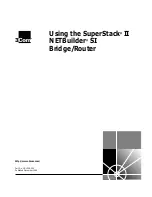
-55-
¾
Port Triggering
Name:
Enter a name for Port Triggering entries. Up to 28 characters can be
entered.
Trigger Port:
Enter the trigger port number or range of port numbers. Only when the
trigger port initiates connection will all the corresponding incoming
ports open and provide service for the applications, otherwise the
incoming ports will not open.
Trigger Protocol:
Select the protocol used for trigger port.
Incoming Port:
Enter the incoming port number or range of port numbers. The
incoming port will open for follow-up connection after the trigger port
initiates connection.
Incoming Protocol:
Select the protocol used for incoming port.
Status:
Activate or inactivate the entry.
Note:
●
The Trigger Port and Incoming Port should be set in the range of 1-65535. The Incoming Port can
be set in a continuous range such as 8690-8696.
●
The Router supports up to 16 Port Triggering entries. Each entry supports at most 5 groups of
trigger ports and overlapping between the ports is not allowed.
●
Each entry supports at most 5 groups of incoming ports and the sum of incoming ports you set for
each entry should not be more than 100.
¾
List of Rules
In this table, you can view the information of the entries and edit them by the Action buttons.
The first entry in Figure 4-25 indicates that: This is a Port Triggering entry named host1, When the LAN
host initiates a TCP request via port of 5354, the incoming port 5355 will open for TCP and UDP
protocol. This entry is activated.
4.5.1.4 ALG
Some special protocols such as FTP, H.323, SIP, IPsec and PPTP will work properly only when ALG
(Application Layer Gateway) service is enabled.
















































